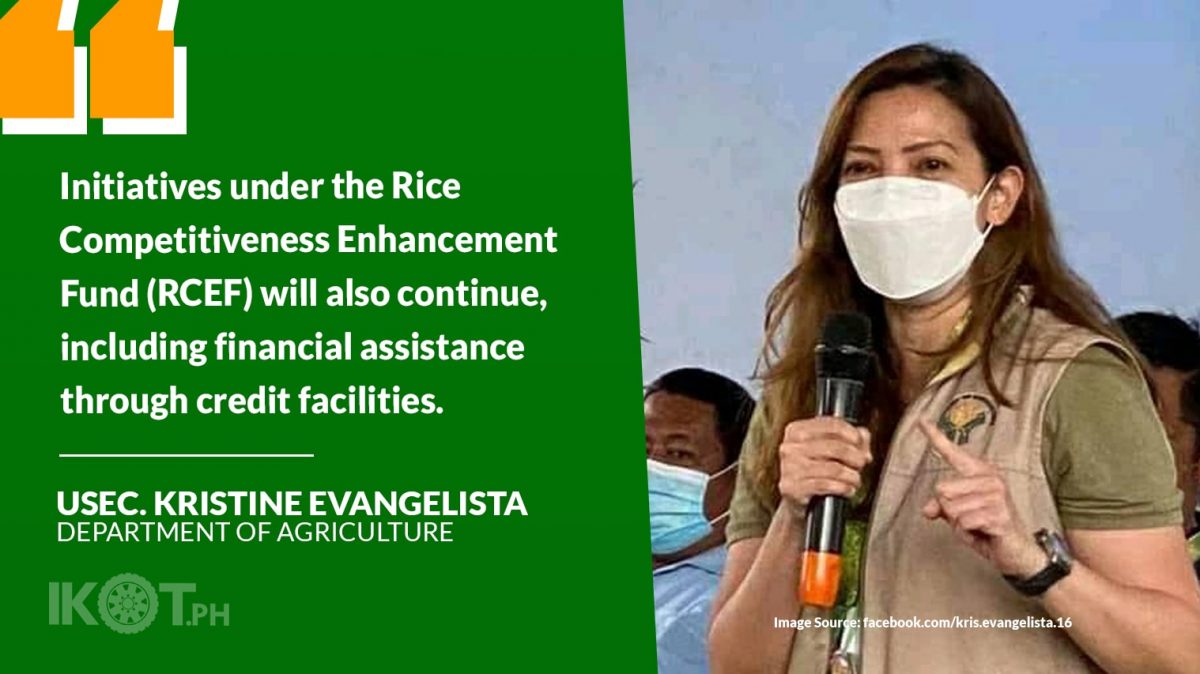In his first State of the Nation Address (SONA), President Ferdinand Marcos, Jr. announced that the Department of Agriculture (DA) will extend financial and technical assistance to farmers in the next planting season, to ensure an increase in the production of local agricultural commodities.
Undersecretary-designate for Consumer and Political Affairs and spokesperson Kristine Evangelista said that the DA’s program, under the leadership of Marcos will focus on increasing production while bringing down prices of fertilizer and other farm inputs.
The new administration will also focus on food mobilization to ensure that consumers will have access to quality food items at affordable prices.
“Initiatives under the Rice Competitiveness Enhancement Fund (RCEF) will also continue, including financial assistance through credit facilities managed by the LandBank of the Philippines, the Development Bank of the Philippines (DBP) and the Agricultural Credit Policy Council (ACPC) of DA,” Evangelista said.
“We are really pushing for clustering and cooperativism. Doon talaga ang ating direksyon.”
“Financial assistance is available. It is just a matter of applying whether as an individual farmer or a cooperative. As of now, we are really pushing for clustering and cooperativism. Doon talaga ang ating direksyon,” the agriculture official explained.
She added that they will coordinate with the Regional Field Offices of the Department to guide farmers on how they can avail themselves of the credit programs.
“We encourage farmers to register under the Registry System for Basic Sectors in Agriculture (RSBSA) so they can avail of the many interventions and support from the government,” Evangelista explained.
In terms of fertilizer, she stressed that the DA’s National Rice Program (NRP) continues to provide aid to farmers especially now that prices of farm inputs persist soaring.
“Tuloy-tuloy ang ating pakikipag-usap and sourcing sa mas murang fertilizer, which is very important para hindi nagtitipid ang ating mga farmers.”
“Tuloy-tuloy ang ating pakikipag-usap and sourcing sa mas murang fertilizer, which is very important para hindi nagtitipid ang ating mga farmers,” Evangelista said.
“Together with the NRP, tinitingnan namin yung tamang schedule ng paglalagay ng pataba. May mga binibilang tayong mga araw, from the time na nagtanim at how many days dapat maglagay ng fertilizer. These are the things we are looking into,” she said.
Evangelista added that NRP is fast-tracking the arrival of cheaper fertilizers, in time for the next planting season in October.
She said that the DA is looking into a possible government-to-government (G2G) agreement, and has started initial discussions with China, Indonesia, Malaysia, and the United Arab Emirates for the procurement of cheaper fertilizer.
“Tinitingnan natin kung saan maganda ang presyo at iyong proximity ng panggagalingan ng abono. Logistics are very important now. Kahit na mura, kung masyado namang malayo, pagdating dito sa atin ay mahal na rin ang mga iyan. May mga tinitingan tayo na strategic sources for fertilizers,” Evangelista said.
She added that the storage and distribution process of fertilizer, including the capability of the Department, are being considered.
“We are currently conducting a national inventory of our facilities that we will maximize not only for fertilizer storage but for food mobilization as well,” Evangelista said.
During the interview, she stressed that the DA will always take into account the suggestions and recommendations of the industry stakeholders.
For sugar, Evangelista said that the DA and the Sugar Regulatory Administration (SRA) are set to meet with the sugar stakeholders this week to discuss immediate interventions to address the weak sugar supply for industrial and household uses, as well as the possible implementation of a Suggested Retail Price or SRP for sugar.


